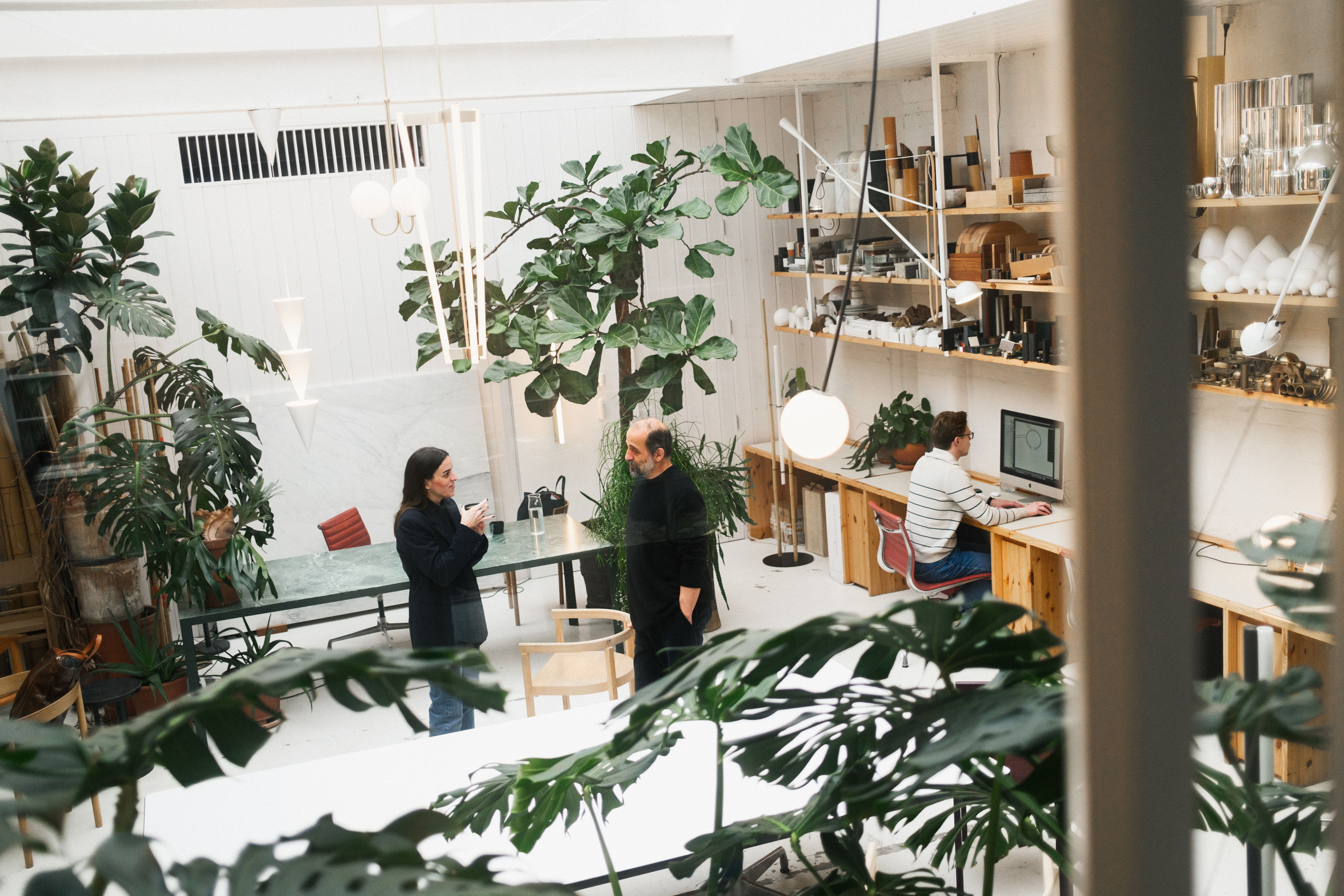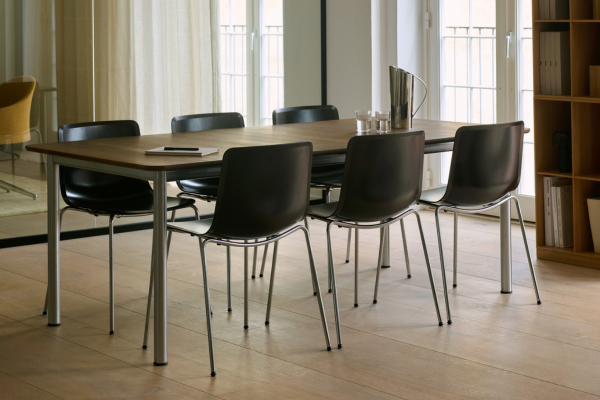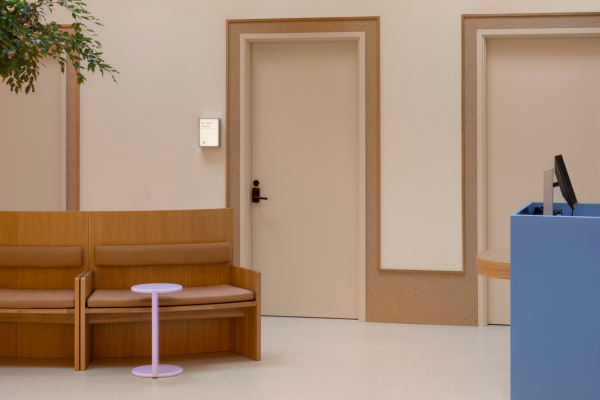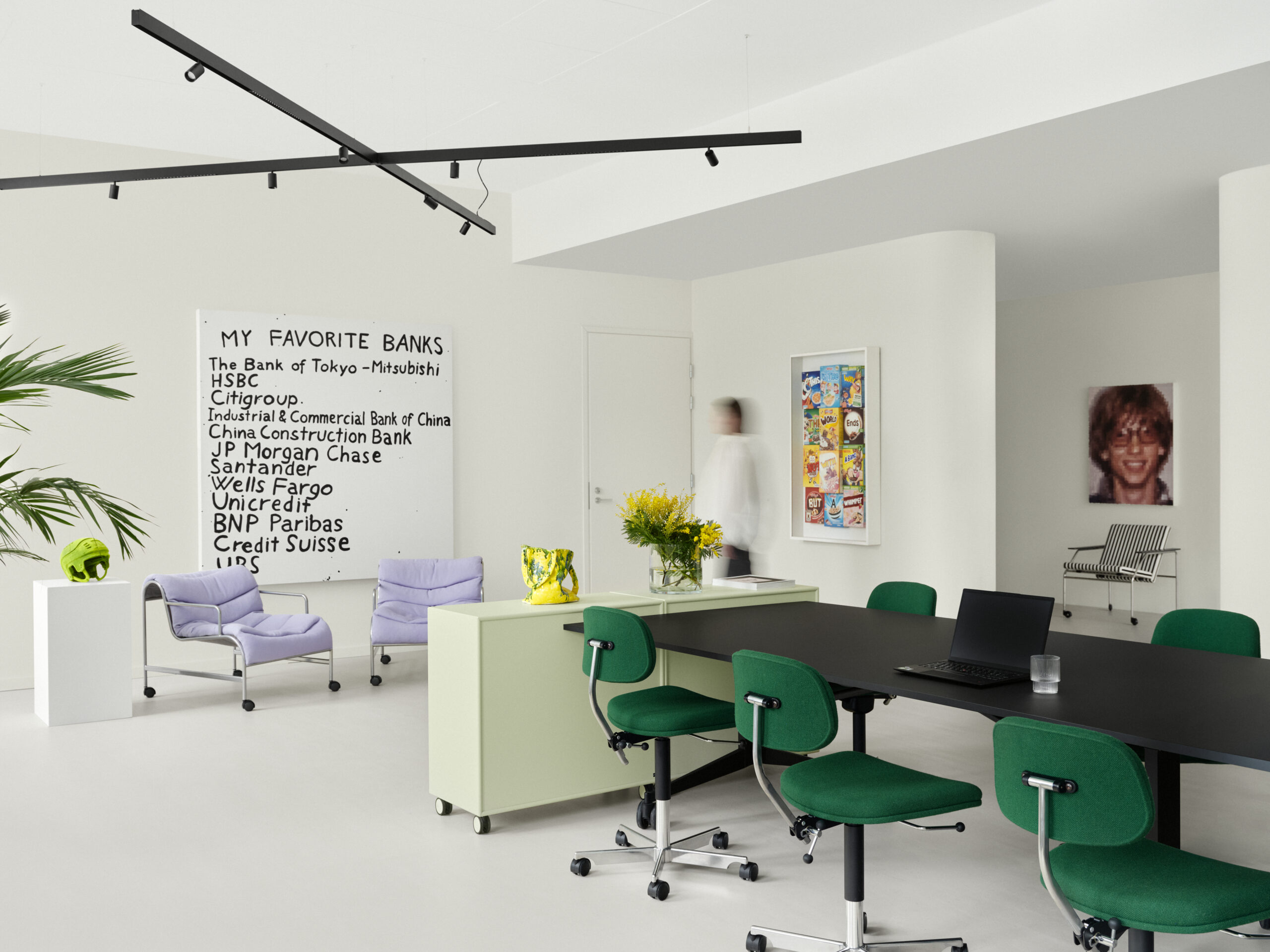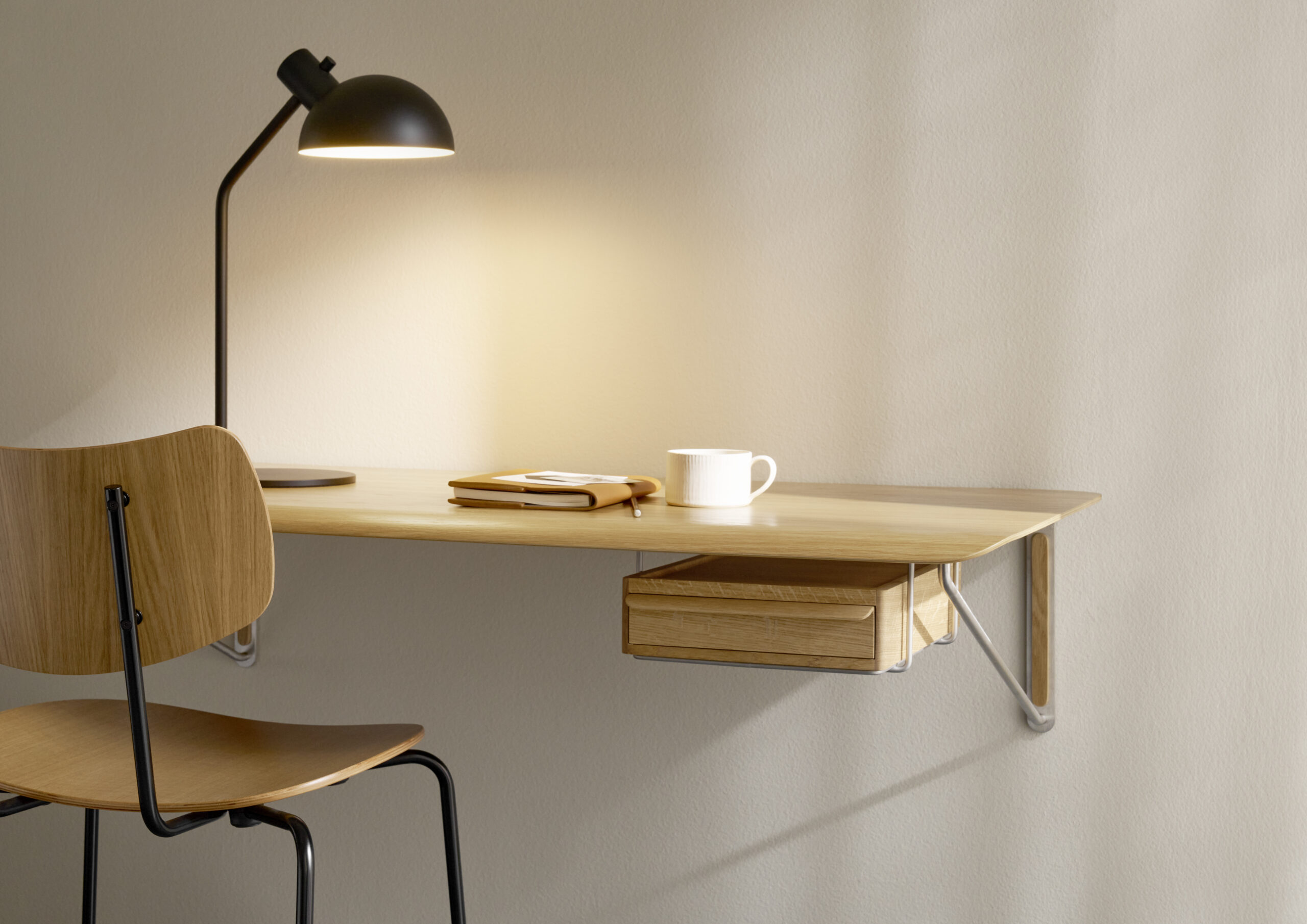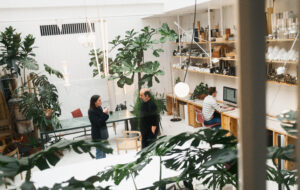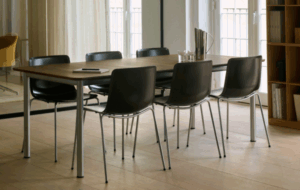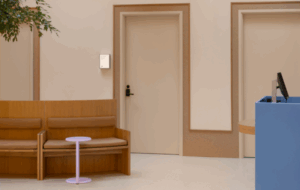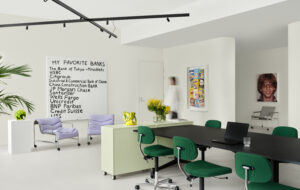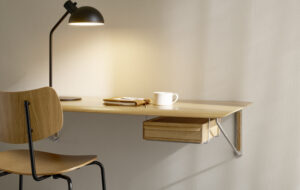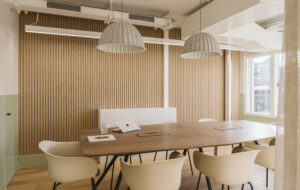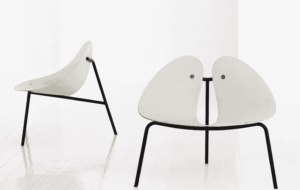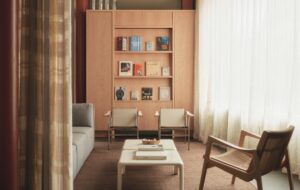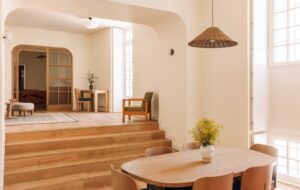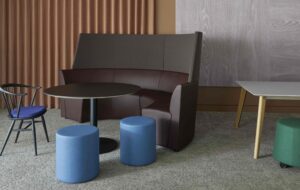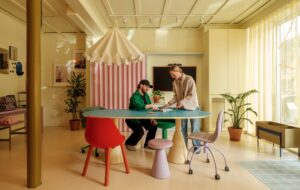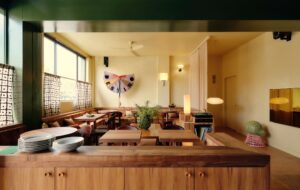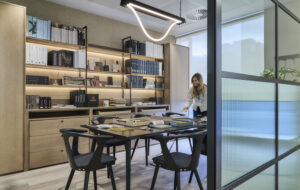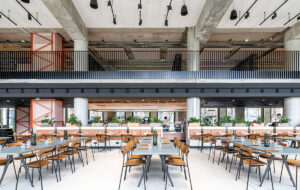

Kerstin Zumstein travels to Chalk Farm to meet design demi-god, Ron Arad.
After 17 years Ron Arad is still in the same studio in Chalk Farm, north London. When you get there you know why. I have yet to see another studio that reflects a designer’s style and personality as much as Arad’s. There is not a straight line in the place. It’s all curves, bows and coils carved into the walls, with a wooden floor that arcs up like a wave. The atmosphere, though, is a little frosty, with all but one of the team far too engaged to make eye contact.
Arad keeps us waiting, of course. Prototypes and iconic chairs are set in the entrance hall and stuck on the walls, making the space feel like a walk-in museum. Seeing so many of his objects together like this reinforces the sense of his godlike status in the design world. Dubbed the Jamiroquai of design because of his ubiquitous hat wearing, it’s no news that Arad has made a mark – and a radically shaped curve-mark as large as a meteorite crater at that – on the British and international design scenes. It’s not just his instantly recognisable products and inexhaustible enthusiasm to experiment with new technologies, but also his dedicated tutorship on the Design Products course at London’s Royal College of Art. Arad finally appears, as always, wearing a hat – his own designed felt hat for Alessi – and otherwise all in black. Picking up the onoffice birthday issue, he declares: “Oh it’s Matthew Hilton! And there’s Andre Klauser and Ed Carpenter, they were both students of mine. Did you know Andre will be tutoring at the RCA soon?” He continues flicking though the mag. “So what’s your aim?” he asks me. To make the office sexy! “Yeah, David Brent tried that.” And I’m relieved. Even demi-gods watch The Office.
He’s looking for our feature on the lighting exhibition at Aram Gallery by his RCA students. The brief was to revisit the classic Anglepoise and design the new desk lamp of the 21st century. “The students really rose to the occasion. I bought one actually, the huge one by Joe Wentworth.” Of course he’s not the first to take a crack at the over-sized Anglepoise – take Gaetano Pesce, Philippe Starck or the Anglepoise company itself. “But Joe took it to an extreme,” says Arad. “You can move it anywhere in space without having to adjust it.” He becomes animated, explaining the lamp with pantomime gestures. “You can point it wherever you want.”
Arad knows each object well. He also has the floppy No Angle No Poise lamp by Tiago da Fonseca. “But it’s not about what I have and what I don’t,” he says, fearing favouritism. “There were amazing results like David Sutton’s Table Lamp, which has this very simple link of the horizontal to the vertical. Simplicity is normally overrated. When there is nothing to say about something boring you say it’s simple, but Sutton’s design is a good example of something delivering more than we can see at first glance. That’s the kind of simplicity I like.”
Arad’s most recent product, the PizzaKobra desk lamp, also hides the complexity of its technology under the clean, coil-shaped base. “The research focused on finding sophisticated joints that enable the lamp’s flexible movement, but it doesn’t bother you, you don’t see it.” The appeal and what Arad calls its “universal response” stems from the fact that you can manipulate the coil in a snake-like motion, turning it from a task light to a decorative light, an uplight or simply a sculpture. Arad moves the lamp around playfully like a magician twisting balloons into different shapes, and I become eager to have a go myself. “It just works. People enjoy touching and it serves whatever you want.”
So what makes it universal? “Because it’s brilliant!” declares Arad. “When you first see it you think, what is it? A heater for plates?” He moves it back down into the flat coil position. “It has that element of surprise. Now it looks like a pizza, right? And now it looks like a cobra. Hence PizzaKobra!” The concept echoes his famous Bookworm shelf for Kartell (1993) and his spiral-shaped Bouncing Vases (with lamp versions that can extend as far as seven metres) for the Not made by hand, not made in China collection (2000), and some have criticised the lamp for being too Nineties. Interestingly enough, Arad admits: “I designed the lamp eight years ago. They may not like me saying this. Most companies were defeated by it, but I knew it was one of those designs worth pursuing.”
So will PizzaKobra become the new standard lamp? “Well it won’t take the place of a £7 desk lamp [it’s estimated to cost around £750], but maybe like in the Eighties when you saw the Tizio light [designed by Richard Sapper for Artemide] just everywhere, on every movie set or desk of anyone who thought they were someone, maybe PizzaKobra will enjoy the same place. All I know is I’ve designed many chairs and tables – some people like them, some are indifferent and some hate them I suppose. But everyone wants this lamp. Why should you have a crane on your table, why should a lamp take such a presence on your desk?” In the contemporary workplace, the trend is definitely toward flats: flat screens, simple desks and minimal spaces. A lamp that can be compressed into a flat surface, which you can put things on or easily pack away, fits the trend well.
Ahead of the launch Arad and iGuzzini are already working on a bigger version to be placed on the floor. There is also a silver-plated limited edition available, which will be auctioned for charity. PizzaKobra is the first in what will be an ongoing relationship between Arad and iGuzzini. The spiral-shaped bouncing lamp Arad designed for the Not made by hand, not made in China series is being worked into mass production by the company, to be made out of polyamide.
“We were the first to use rapid prototyping in the way that it became the final product,” Arad says. He is renowned for experimenting with new technologies and pushing boundaries, and the same attitude can be found in many RCA students – often put down to his influence. “With new technologies it’s exciting in the early days to find out what we can do with it.” But today everyone has jumped on the rapid prototyping and rapid manufacturing bandwagon, as if it were new. “For me this is history, we were experimenting with RP in 1999. People take your ideas and claim them for themselves – young designers think they’ve discovered the world.” Do I hear resentment? “It’s the way the world works. Ideas are there to be used – that’s one of the reasons we always aim to do new things, and then you move on. The reason why we’re revisiting these designs is because iGuzzini are putting them into commercial production and distribution.”
Arad’s other lamps include the Lolita chandelier for Swarovski in 2004 (also spiralling) and the remote control Aerial light produced with One Off Ltd, the company he founded with Caroline Thorman in 1981. But he remains best known for his chairs. “The thing with designing yet another chair is that there is a lot of given. We know what size it needs to be roughly, the relationship of the angles, what it does. I mean the earth would still be turning even if we never designed a chair again after Arne Jacobsen. Mostly it’s a waste of energy, but then every so often you come across something that makes it worthwhile. Like the one we’re sitting on.” It’s the Ripple Chair Arad designed for Moroso – he took the idea behind his 1997 Tom Vac chair for Vitra and decided to “tie the bow”. “You can stroke yourself,” he says smiling, leaning back and doing just that. “I sent the drawings to Rolf Fehlbaum to see how he felt about it. His reaction was: ‘I like to see continuity in a designer’s work.’ He is such an enlightened man. That never would have happened with an Italian company.”
Arad takes the term signature designer to another level by using his own signature as a common thread in his designs. There are lamps shaped like his hand writing, his signature adorns the new PizzaKobra light, it’s all over his studio and branded on the ping pong table outside his office. The continuity Fehlbaum saw in Arad’s designs is unbroken. As is his trademark hat wearing. I have to ask where he gets them from: “I don’t design all my hats, but some – simply because most hats that I like are too small. You see, I have a very big head: literally and otherwise too!”

